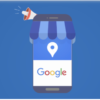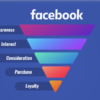Free
Copywriting For Startups – Your Complete Guide
If you’re looking to grow your startup and gain an edge over your bigger competitors, mastering the art of copywriting is a must. It’s the key to creating messaging that speaks directly to your ideal customers’ wants and needs, even if you don’t have a massive marketing budget.
In this guide, we’ll break down 5 essential copywriting strategies that will instantly improve the impact of your messaging. By the end, you’ll have the power to attract and convert prospects in even the most competitive markets, all while building an unforgettable brand.
Strategy #1: Benefits, Not Features
As a founder, it’s natural to want to talk about your mission and what makes your company unique. But when it comes to copywriting, it’s all about what’s in it for your customers. Shift the focus from yourself to your customers by highlighting the benefits they’ll experience from your product or service.

For example, instead of simply mentioning the Course Creator feature of ClickFunnels 2.0, emphasize how it eliminates the need for third-party integrations, simplifies course hosting and payment processing, and centralizes everything in one easy-to-use platform. By highlighting the benefits, you’ll show potential customers why they should care about your product.
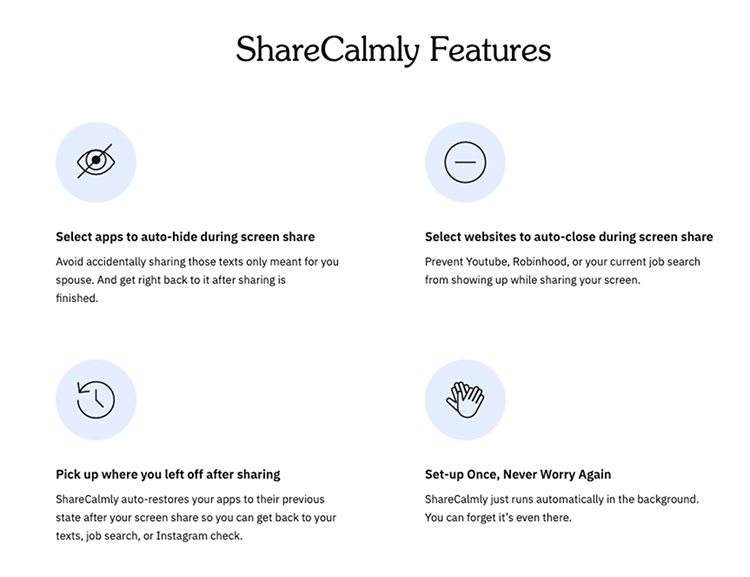
Strategy #2: Target One Ideal Customer
Many founders make the mistake of trying to appeal to everyone, thinking it will lead to more sales. But in reality, narrowing down your target audience is the key to success. Focus on attracting and speaking directly to your perfect customer, those who are most likely to benefit from your product or service.
Take the example of a tool that records online meetings. While it can be used by anyone, the copy specifically targets product managers by using language like “voice of customer” and “product workflow”. By focusing on this niche market, the messaging becomes more effective in capturing the attention of product managers and addressing their specific needs and challenges.
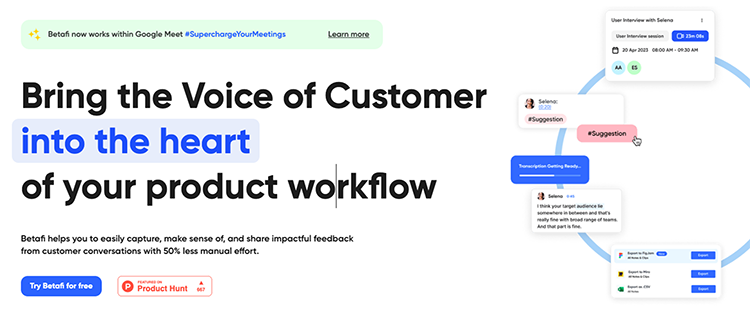
Don’t be afraid to limit your overall reach in order to make a strong connection with your ideal customer. By doing so, your messaging will be more powerful and persuasive, leading to higher conversion rates.
Get ready to transform your startup’s copywriting strategy with these foundational techniques. By implementing these strategies, you’ll be on your way to attracting, engaging, and converting your perfect customers. Let’s get started!
Strategy #3: Bring Your Prospects into the Story
Every prospect has a story they tell themselves. And if you can tap into that story and connect it to your brand, you’ll see more conversions.
One effective framework to achieve this is the “Hook, Story, Offer” approach. Grab attention, empathize with the story your prospects are telling themselves, and then showcase how your offer can transform their lives.
In crafting the story, focus on your audience, not yourself. Address the struggles or frustrations they’re currently facing, and demonstrate how your product or service can resolve those conflicts.
Ultimately, the transformation is what your prospects expect to experience when they accept your offer.
Need an example of great storytelling? Look no further:
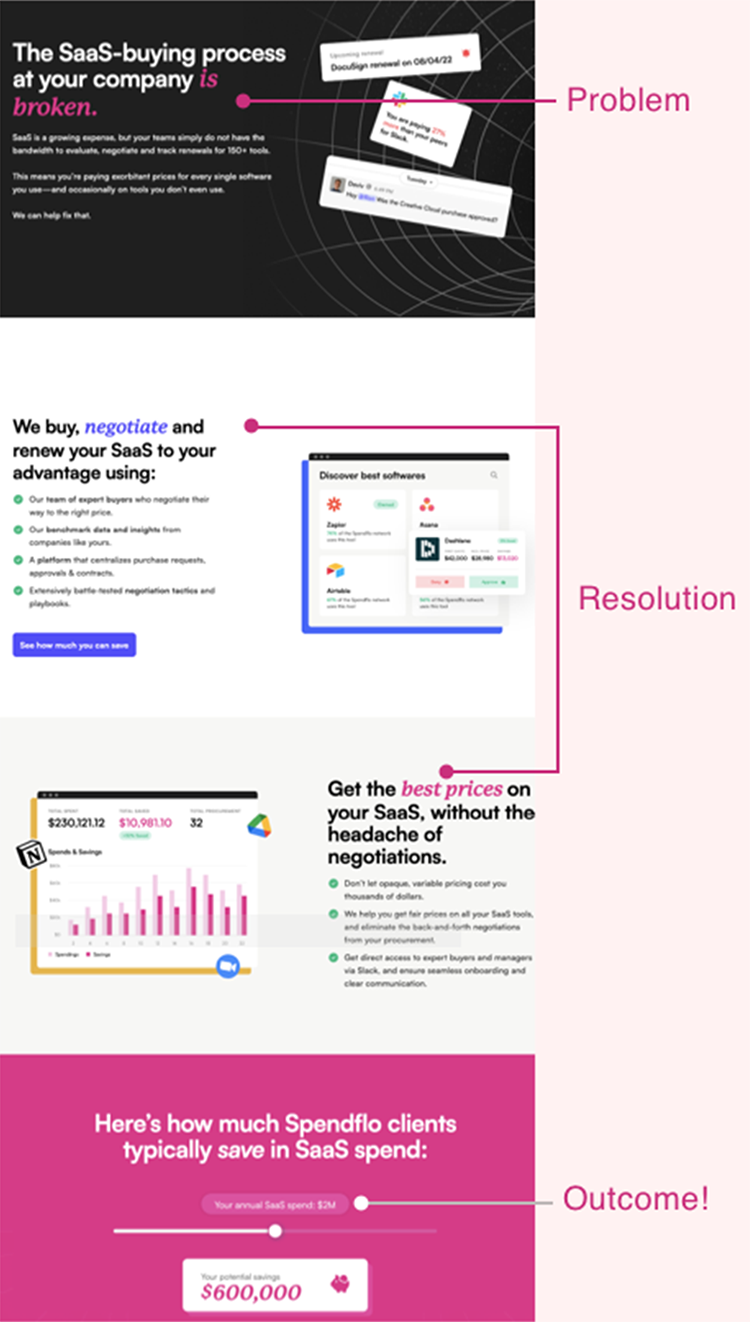
Start by acknowledging the story your prospects are telling themselves – that the way they buy SaaS offers at their company is broken.
Then, introduce the solution or what solving the problem could look like.
Finally, highlight the transformation and the potential outcome of saving upwards of $600,000 per year by eliminating SaaS fees.
When writing your own copy, remember to keep the focus on your audience and their desires. Utilize the “Hook, Story, Offer” framework as explained in Dot Com Secrets by Russell.
Strategy #4: Understand the Platforms
When it comes to driving traffic to your sales pages, it’s crucial to adapt your copy to the platforms you use.
Each platform has its own nuances and the way users interact with it. For example, people browsing YouTube have a longer attention span compared to those on Facebook.
It’s inspirational and engaging, yet short enough to capture attention on Facebook. The statement “You would not have the dream if you didn’t already have what it takes to make it happen” connects emotionally with readers.
Rather than immediately selling something, it aims to drive a click to a landing page.
On the landing page, the copy becomes more direct. It highlights the offer (free audio coaching) and the value proposition (turning big dreams into a reality). The language stays consistent with the inspirational and motivational message from the ad, but provides specific details of what visitors can expect.
On Twitter, the focus is on getting people to think while building the brand’s voice.
By adapting your messaging to each platform, your campaigns will be more effective. Remember, it’s better to tailor your message to each platform than to try to force the same message everywhere.
To attract even more of your dream customers, regardless of the platform you use, don’t forget to check out the free Traffic Secrets Masterclass.
Strategy #5: Create an Unforgettable Brand Voice
Stand out from the competition with a strong brand voice that leaves a lasting impression.
When your audience sees your logo and reads your messages, you want them to think and feel something about your company. This is how you build a successful business.
Many successful companies understand the power of a unique brand voice.
Your brand voice encompasses everything about your brand, from the words you use in your messaging to the images you choose and the personality you develop.
To help you get started, here’s a Brand Voice chart:
Professional: Formal and authoritative. Use industry terms, but avoid slang or jargon.
Innovative: Future-focused and tech-savvy. Discuss new ideas and technologies.
Friendly: Approachable and warm. Use conversational language, not cold or overly formal.
Trustworthy: Reliable and transparent. Share clear and honest information. Avoid false or exaggerated claims.
Take a look at well-known brands and how they stand out with their messaging.
For example, Innocent Drinks has a fun, cheeky, and informal brand voice that appeals to its youthful audience. Apple, on the other hand, has an innovative and forward-thinking tone.
J. Peterman, known for its adventurous spirit, uses a unique brand voice in its product descriptions, often including detailed anecdotes or whimsical adventures. This gives the company a distinctive edge.
Your brand voice will evolve over time, but it’s important to spend some time upfront deciding what personality you want to convey in your marketing.
Final Thoughts:
Standing out and getting sales rolling in can be challenging for startups. However, by following the strategies in this guide, it becomes much easier.
Focus on the benefits and understand your target audience before you start. Develop a strong brand voice and tailor your messaging to each platform you use.
Lastly, use the “Hook, Story, Offer” framework to connect with your prospects and show them that you understand their pain points.
For even more practical tips on copywriting, check out Jim’s Copywriting Secrets book. It’s packed with valuable advice to help your startup grab more market share.
>>>Join The One Funnel Away Challenge<<<




















